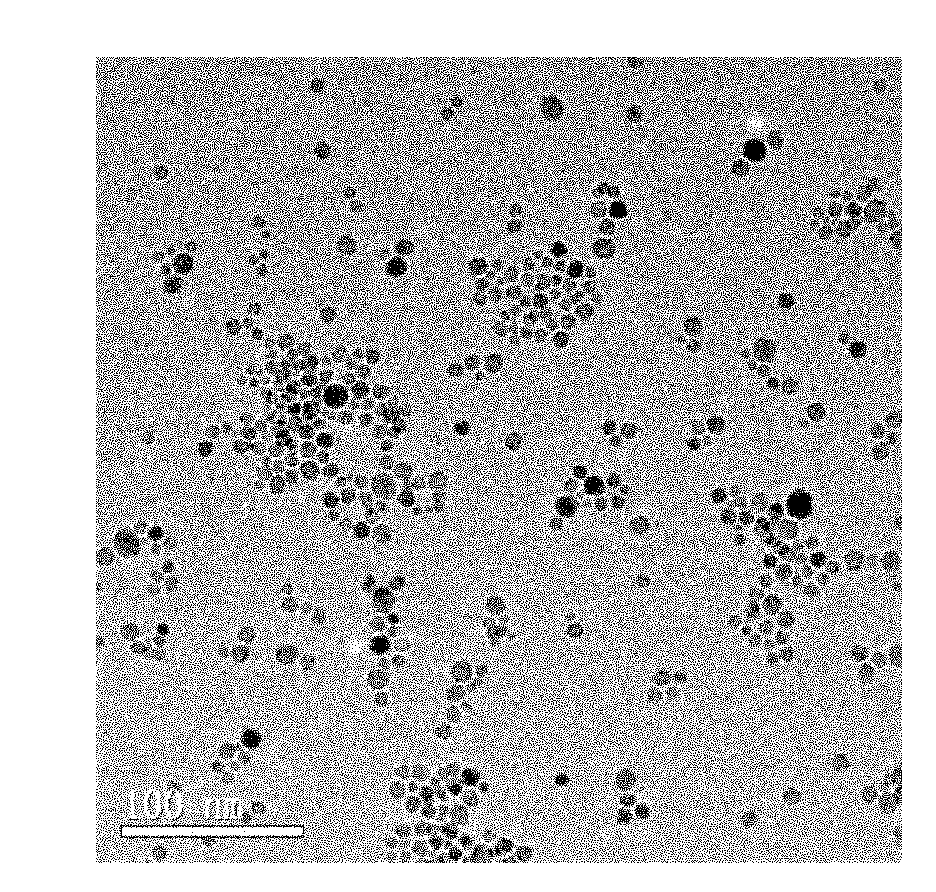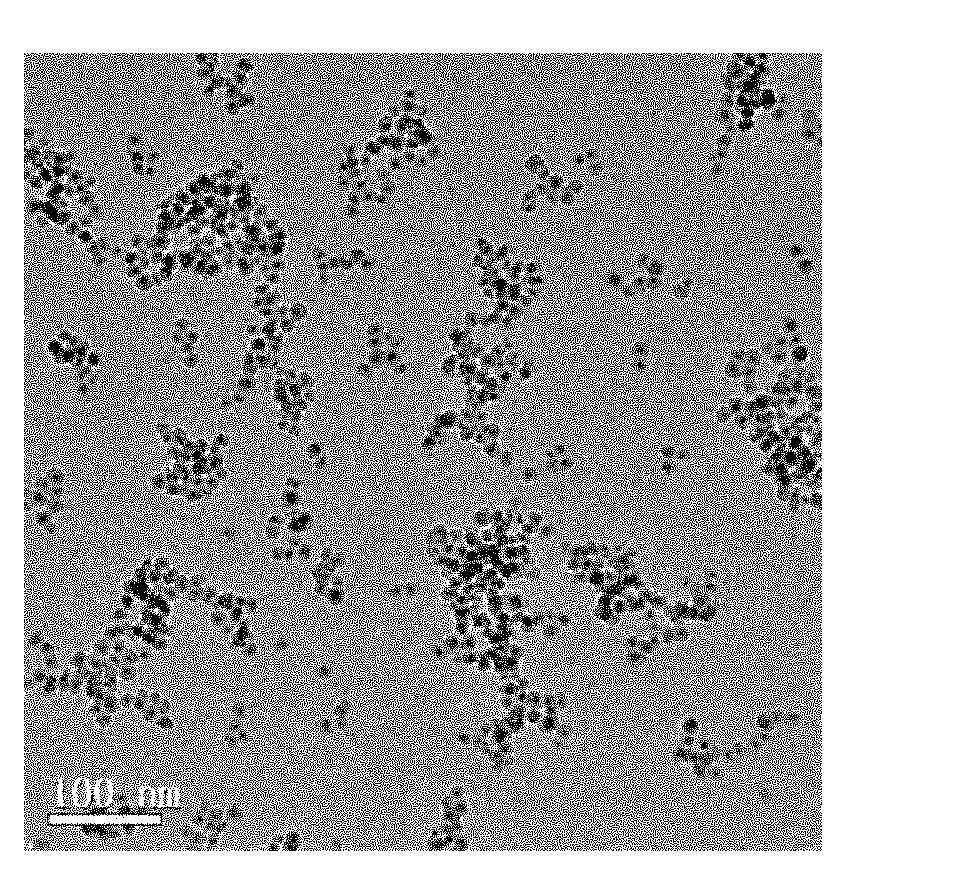Ferroferric oxide-silicon dioxide-thymine nanoparticles and preparation method and application thereof
A technology of ferric tetroxide and nanoparticles, which is applied in the analysis, emulsion delivery, and contrast agent of nuclear magnetic resonance/magnetic resonance imaging by nuclear magnetic resonance, etc., can solve the problem of rare mercury ions, etc. The effect of short response time and convenient operation
- Summary
- Abstract
- Description
- Claims
- Application Information
AI Technical Summary
Problems solved by technology
Method used
Image
Examples
Embodiment 1
[0037] Embodiment 1 synthetic Fe 3 o 4 Nanoparticles:
[0038] Take ferric acetylacetonate (1.060g, 3mmol), mix phenyl ether (15mL) and oleylamine (15mL, 6mmol), and heat to 180°C under nitrogen protection (nitrogen can be replaced by an inert gas such as helium), at this temperature After reacting for 30 minutes, the temperature was raised to 300° C., and the reaction was carried out at this temperature for 1 hour. The obtained product was washed and centrifuged with absolute ethanol, and dried in vacuum to obtain Fe 3 o 4 magnetic nanoparticles. Electron microscope transmission picture as figure 1 As shown, Fe 3 o 4 The magnetic nanoparticles are well dispersed in n-hexane (or organic solvents such as cyclohexane), with an average size of about 8.25nm, which belongs to the size range of superparamagnetic, uniform in size, and has good monodispersity. Electron diffraction pattern as Figure 4 shown.
Embodiment 2
[0039] Embodiment 2 synthetic Fe 3 o 4 @SiO 2 -NH 2 Nanoparticles (silicon-coated and amino-linked):
[0040] Get the Fe that embodiment 1 obtains 3 o 4 10mg of nanoparticles, 35ml of cyclohexane and 2.0g (4.64mol) of α-(4-nonylphenyl)-ω-hydroxyl-poly(oxygen-1,2-diethylene) (i.e. Igepal CO-520), Mix and stir evenly; add 0.35ml 25wt% ammonia water to adjust the pH value to 7.5-8.0, then add 0.2mL tetraethyl orthosilicate (186mg) and 0.035ml 3-aminopropyl-triethoxysilane (the content is 98wt%) , 33 mg), stirred for 24 to 48 hours.
[0041] Add 50mL absolute ethanol and centrifuge to obtain Fe 3 o 4 @SiO 2 Nanoparticles; electron microscope transmission picture as figure 2 As shown, the particle size is uniform and has good monodispersity.
Embodiment 3
[0042] Embodiment 3 measures amino density
[0043] Get the Fe that embodiment 2 obtains 3 o 4 @SiO 2 -NH 2 26 mg of nanoparticles and 9-fluorenylmethyl chloroformate (Fmoc-Cl) (60 mg, 0.2 mol) were dissolved in 5 mL of anhydrous N, N-dimethylformamide (DMF) in N 2 React under protection for more than 12 hours. Freeze-dry after centrifugation with anhydrous methanol. The dried nanoparticles are about 20 mg. Add 1.5 mL of anhydrous DMF and 0.5 mL of piperidine, and sonicate for 30 min. Centrifugal 15min then, get precipitation, obtain the nanoparticle (Fe 3 o 4 @SiO 2 -NH 2 Nanoparticles). Take the clear liquid to measure ultraviolet light, and calculate Fe 3 o 4 @SiO 2 The number of amino groups on the surface of nanoparticles; the density of amino groups was detected to be 1.35*10 -4 mol / g.
PUM
| Property | Measurement | Unit |
|---|---|---|
| The average particle size | aaaaa | aaaaa |
| Average size | aaaaa | aaaaa |
| Saturation magnetization | aaaaa | aaaaa |
Abstract
Description
Claims
Application Information
 Login to View More
Login to View More - R&D
- Intellectual Property
- Life Sciences
- Materials
- Tech Scout
- Unparalleled Data Quality
- Higher Quality Content
- 60% Fewer Hallucinations
Browse by: Latest US Patents, China's latest patents, Technical Efficacy Thesaurus, Application Domain, Technology Topic, Popular Technical Reports.
© 2025 PatSnap. All rights reserved.Legal|Privacy policy|Modern Slavery Act Transparency Statement|Sitemap|About US| Contact US: help@patsnap.com



